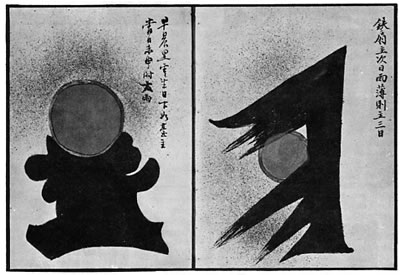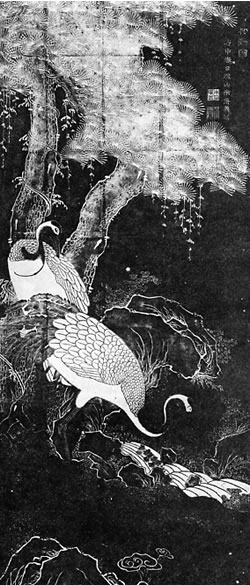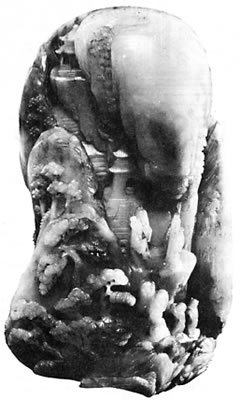
 |
Online
Archive
|
| Issue 8 - November 1972 |
| Taoist Art |
 The
Chinese Taoist Art Exhibition in the Gulbenkian Museum in Durham, which
opened in July, has been well received by a considerably wide section
of the public. Due to its success, this pioneering exhibition is to remain
on show until the end of the year in the Museum's pitifully small temporary
exhibition room. But you do feel that the size of the exhibition room
is immaterial for the understanding of the workings of Taoist ideas in
Chinese art. In fact, one is reminded now and again that there is a world
beyond the walls of that exhibition room, and beyond the primarily visual
impact of this interesting display of over 250 choice items. You travel
freely between Heaven and Earth, and scale the Universe with the freedom
of the Elements of Nature, and the penetration of the strength of your
own mind. The
Chinese Taoist Art Exhibition in the Gulbenkian Museum in Durham, which
opened in July, has been well received by a considerably wide section
of the public. Due to its success, this pioneering exhibition is to remain
on show until the end of the year in the Museum's pitifully small temporary
exhibition room. But you do feel that the size of the exhibition room
is immaterial for the understanding of the workings of Taoist ideas in
Chinese art. In fact, one is reminded now and again that there is a world
beyond the walls of that exhibition room, and beyond the primarily visual
impact of this interesting display of over 250 choice items. You travel
freely between Heaven and Earth, and scale the Universe with the freedom
of the Elements of Nature, and the penetration of the strength of your
own mind.

The visitor is invited for the first time to take a more profound approach to Chinese art, and try to come to terms with the initiated Taoist interpretation of these works of art, in which, for example, a kidney-shaped carved jade is symbolic of the vulva and a tripod vessel of the penis. On the other hand one is also reminded that the initiated interpretation of sexual intercourse (with all its realistic representation) is not considered erotic at all, but deeply religious and philosophical. We see the workings of Taoism in Chinese art, the open philosophical system of Taoism that reconciles opposites, and fuses the yin and yang elements of Nature, in order to emphasise the Harmony of the Universe. (It is in this context that the sexual act becomes so significant.) One also learns the Taoist art of active participation in the discovery of the mysterious forces of the Universe, frequently by viewing things on a miniature scale. The splendid conglomeration of Chinese folklore, nature-worship and metaphysics is shown in ten main sections that range from the symbolism of shapes and colours to occult arts and sexology. 
Through these sections we are shown the development of abstract tendencies
in Chinese art, e.g. in the compositional and symbolic development of
Taoist calligraphy, and particularly in landscape painting, which represents
one of the highest levels of abstraction from outward reality that the
Chinese genius has been able to achieve. The exhibition |